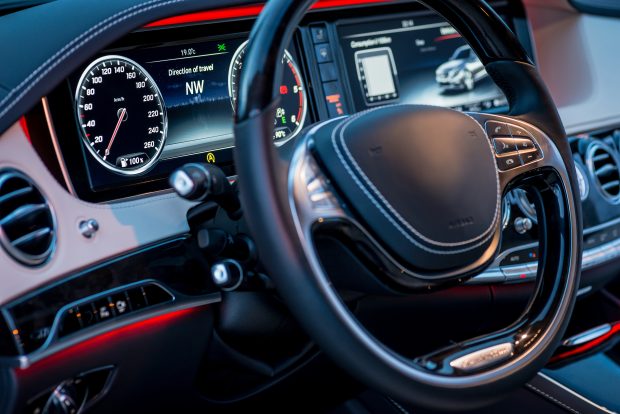 Source: Adobe Stock.
Source: Adobe Stock.
The automotive finance market has witnessed a shift in the first quarter of 2023 amid interest rates rising – making it important for lenders to analyze the most current data as they continue to play a critical role for consumers who are looking to purchase a vehicle.
Experian's "State of the Automotive Finance Market Report: Q1 2023" took a deeper dive into current financing trends and found that the average interest rate for a new vehicle increased to 6.58%, from 4.10% in Q1 2022. Meanwhile, the average interest rate for a used vehicle reached 11.17% this quarter, up from 8.67% the previous year.
Recommended For You
Loan Amounts Taper Off as Interest Rates Rise
It's notable that more consumers are bringing trade-in value and/or cash to the transaction to help alleviate rising vehicle prices and interest rates, resulting in only a slight uptick in average loan amounts for new vehicles compared to previous years.
For instance, the average loan amount for a new vehicle increased $1,213 year-over-year, hitting $40,851 in Q1 2023. This is a significant change, considering there was a $4,255 year-over-year spike from Q1 2021 to Q1 2022.
Meanwhile, the average loan amount for a used vehicle decreased $1,590 year-over-year, going from $28,010 in Q1 2022 to $26,420 in Q1 2023. Comparatively, the average used vehicle loan amount experienced a $5,619 year-over-year increase from Q1 2021 to Q1 2022.
Despite loan amounts stabilizing, increasing rates have affected the average monthly payments for both new and used vehicles. For example, the average monthly payment for a new vehicle went from $650 in Q1 2022 to $725 in Q1 2023 and the average monthly payment for a used vehicle increased to $516 this quarter, from $505 last year.
When analyzing the interest rates lenders are currently offering, data shows captives gave consumers the lowest rate for a new vehicle in Q1 2023, coming in at 5.76%, from 3.51% in Q1 2022, with credit unions not far behind at 6.36%, an increase from 3.54% last year, followed by banks, which went from 4.52% to 7.70% year-over-year.
On the used side, credit unions offered an interest rate of 7.93% in Q1 2023, an increase from 5.16% in Q1 2022 but remain the lowest among other lenders. Captives went from 7.30% last year to 10% this quarter and banks increased from 6.83% to 10.11% in the same time frame.
Loan Terms Affected by Interest Rates
Consumers tend to choose longer terms to obtain lower monthly payments, but it seems more are opting for shorter terms in the first quarter of 2023, presumably to offset the rising rates.
In fact, data shows captives offered 65.88 months for a new vehicle in Q1 2023, from 66.12 months in Q1 2022 – while banks were at 70.47 months this quarter, a decrease from 70.94 months last year, and credit unions went from 73.51 months to 73.04 months year-over-year.
Captives also gave consumers the shortest term for used vehicles – coming in at 68.34 months in Q1 2023, from 69.28 months in Q1 2022. Credit unions offered 68.44 months this quarter, from 68.50 the previous year and banks decreased to 68.99 in the first quarter, from 69.48 last year.
Loan terms and interest rates are important metrics that credit unions should take into consideration as they look for ways to gain market share.
Market Share Overview
With captives handing out lower rates and shorter terms, it has resulted in reclaiming the overall market share in Q1 2023 – rising to 26.59%, from 24.71% in Q1 2022. However, banks came in a close second at 26.03% this quarter, a decrease from 30.56% last year, and credit unions went from 22.40% to 24.53% year-over-year.
Breaking the data down further, captives made up 54.11% of new vehicle market share in Q1 2023, from 49.97% in Q1 2022. Banks decreased from 29.18% to 23.21% year-over-year and credit unions saw a slight uptick, going from 16.09% last year to 16.53% this quarter.
However, credit unions led the used vehicle market share, coming in at 29.76% in Q1 2023, from 26.62% in Q1 2022 – while banks decreased to 27.87%, from 31.48% in the same time frame and captives held 8.59% this quarter, a slight growth from 7.85% the previous year.
As we anticipate the year ahead, it's crucial for credit unions to leverage this data and stay up-to-date on the latest financing trends, which can enable them to properly assist consumers who are searching for a vehicle that fits within their financial needs.
 Melinda Zabritski
Melinda Zabritski Melinda Zabritski is the Senior Director of Automotive Financial Solutions for Experian.
© Touchpoint Markets, All Rights Reserved. Request academic re-use from www.copyright.com. All other uses, submit a request to [email protected]. For more inforrmation visit Asset & Logo Licensing.






